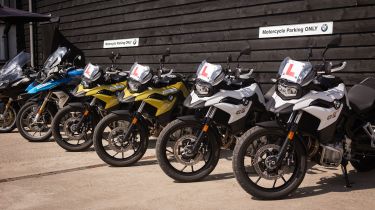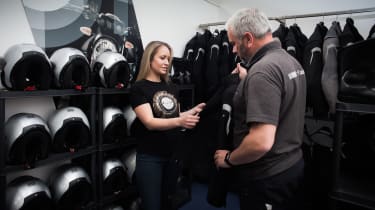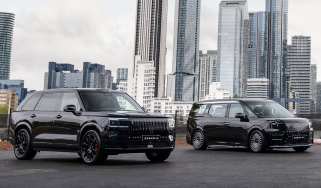How to choose the best motorcycle training school
Here’s what to consider when searching for the best motorcycle training school near you

There are hundreds, if not thousands, of motorcycle training schools scattered across the United Kingdom, but not all motorcycle training schools are made equal when it comes to the level or quality of the training provided.
Unlike so much else in the digital age, there are very few tools or comparison lists of the ‘best motorcycle training schools’ out there, so it can be quite difficult to know how good a motorcycle training school is until you’ve parted with your hard-earned cash and are on the road.
Choosing the right motorcycle training school, however, could make all the difference when it comes to riding on the road safely. Good training can help influence your riding style in a positive way, letting you build confidence and deal with unpredictable traffic in a safe manner. Going to the wrong training school could encourage bad habits and get your motorcycling journey off on the wrong foot.
So to help you find the best motorcycle training school near you, here are the key things you should be looking out for assembled by the motorcycle licence holders on our team.
Do some online research
When shortlisting motorcycle training schools, make sure you do your research.
While the website of the motorcycle training school you’re looking at might have lots of useful information, it’s important to check to see if previous students have left reviews on the school's website, on Google or on other platforms.
Reviews from other students will give you an insight of what the school and instructors are like, as well as giving you an idea if their experience has been positive or negative.
Social media
Asking for training school recommendations via social media pages and new motorcycle rider forums can also help narrow down the search for the best motorcycle training schools in your area.
Here you’ll be able to ask other people for their opinions and experiences, digging a little deeper than you might be able to by just reading a review online.

Visit the training facilities
Once you’ve shortlisted a motorcycle training school you’re considering, ask if you can visit before booking the course.
Visiting the school you’re looking to attend will give you a chance to check out the facilities, meet the instructors and see what kind of safety equipment they provide, as well as the condition of it.
If the motorcycle training school provides safety equipment like helmets, gloves or jackets for any of their courses, have a quick look at the overall condition of these. Does the helmet have scuff marks which suggest it has been badly treated or even worn by someone who came off their motorcycle? Are the gloves tatty or are the jackets coming away at the seams? While all these pieces of equipment should be kept in good condition or replaced if someone comes off, poorly-kept safety equipment could be a sign that the training school hasn’t invested in important safety gear.
When you visit the training school, make sure to ask about and ideally look at the motorcycle(s) you’ll be learning on to see what condition they’re in as well as their age. Good training schools will ensure their fleet of motorcycles are in a good condition; not only from an aesthetic perspective but also for the safety of riders and the general public.
Take advantage of free taster sessions
Some motorcycle training schools offer free taster sessions for potential riders which can be a great opportunity to meet the instructors, see the facilities and even get a first taste of the motorcycles you could be training on.
If the school provides you with excuses why you can’t visit, that is not a good sign, so perhaps look elsewhere.

How many hours of training does the course include?
When finding a motorcycle training school, you need to find out roughly how much time you’ll spend on the course, including on-road riding time.
For example, BMW Rider Training’s seven-day direct access (DAS) course we enrolled in consisted of approximately 50 hours of teaching, including both classroom and on-road time, while another independent motorcycle training school we used consisted of approximately 35 hours of teaching in the classroom, on the training pad and on-road over five days.
However some other schools’ week-long courses can consist of nearly half as many hours of training, so it's worth getting at least an estimate of how much teaching you'll be getting for your money.
What are the instructors’ level of certification?
Discuss to what level the instructors at the school are certified to, especially the one(s) that’ll be teaching you.
For instance, DAS qualified is the highest certification in the UK. On the other hand of the spectrum, ‘down trained’ means the school themselves say the instructor is good.
Down trained instructors can only teach Compulsory Basic Training (CBT) courses, but having instructors all trained to the highest standards is always reassuring and means you’re less likely to receive mixed messages or instructions if you progress to learning to ride bigger bikes and are then taught by more highly certified instructors.
Full day CBT courses
When it comes to CBT schools specifically, you should look for a school that provides a full day course at least, and not a half day.
When it comes to the CBT course themselves, there should ideally be a ratio of 2:1 of instructors to students. But for context, the industry standard is 4:1 for on-site training, and then 2:1 for the on-road session.
When it comes to the on-road section of the CBT, you should make sure that the session is at least two-hours long. Some motorcycle training schools are known for rushing this portion of the course but you really need time to build up your confidence before having your certificate signed and you’re allowed to ride solo on the road.
Get even more from Auto Express, follow our channels...
• Google
• Reddit
• Whatsapp
Find a car with the experts




